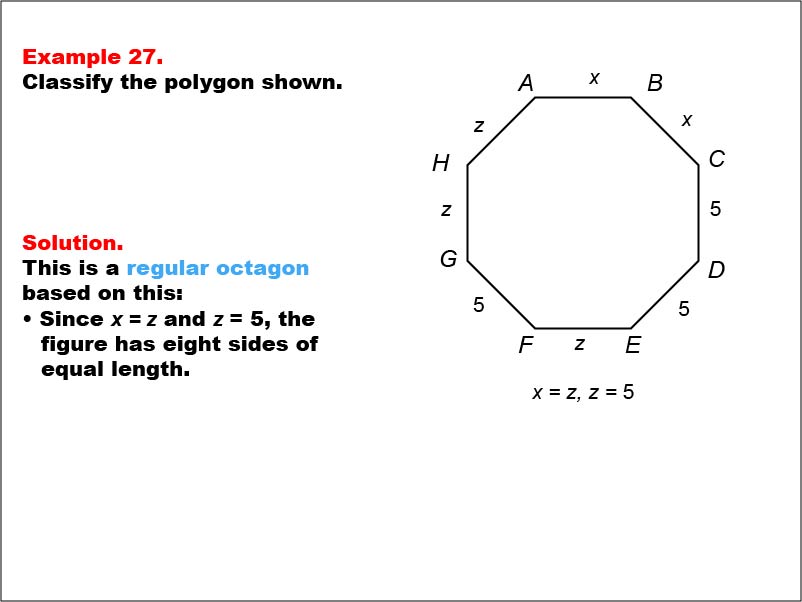
Display Title
Math Example--Polygons--Polygon Classification: Example 27
Display Title
Math Example--Polygons--Polygon Classification: Example 27

Topic
Polygons
Description
This example features an octagon with sides labeled as x, z, and 5, showing that x = z = 5, indicating equal length for all sides. It demonstrates a regular octagon by using a combination of variables and numeric values to represent equal side lengths.
Polygon classification is a fundamental concept in geometry that helps students analyze and categorize shapes based on their properties. This collection of examples provides a comprehensive look at various aspects of regular octagons, emphasizing the importance of side length equality in classification.
Presenting multiple worked-out examples is essential for students to fully grasp the nuances of polygon classification. Each example offers a unique perspective on how to determine regularity, allowing students to build a comprehensive understanding of the concept through varied representations and notations.
Teacher's Script: Let's examine this octagon together. We see sides labeled with x, z, and 5, along with the equation x = z = 5. What does this tell us about the side lengths? How can we use this information to classify the octagon as regular? Think about why using different notations to represent the same length is important in mathematical reasoning and how it relates to our understanding of regular polygons.
For a complete collection of math examples related to Polygons click on this link: Math Examples: Polygon Classification Collection.
| Common Core Standards | CCSS.MATH.CONTENT.5.G.B.3, CCSS.MATH.CONTENT.7.G.B.6 |
|---|---|
| Grade Range | 6 - 8 |
| Curriculum Nodes |
Geometry • Polygons • Definition of a Polygon |
| Copyright Year | 2013 |
| Keywords | polygons, classification |